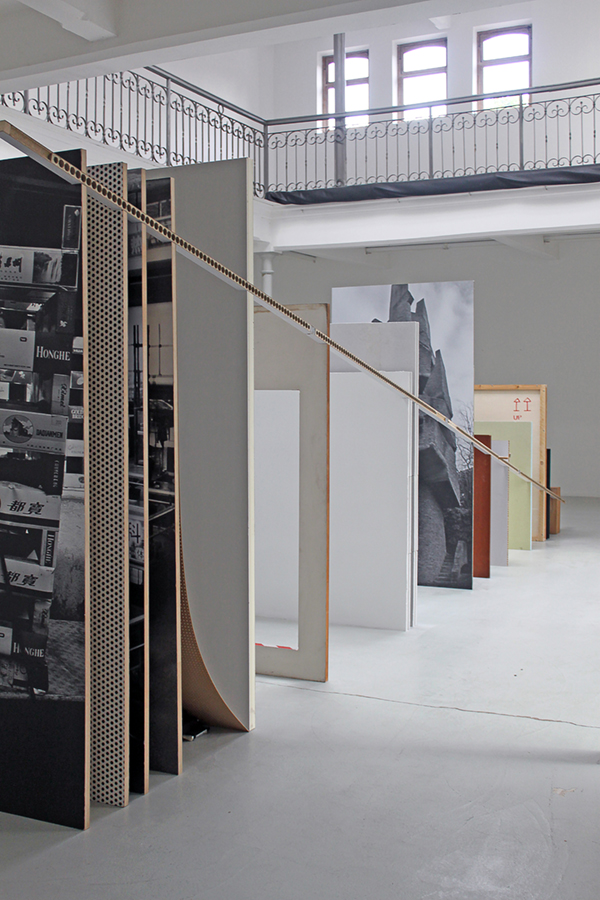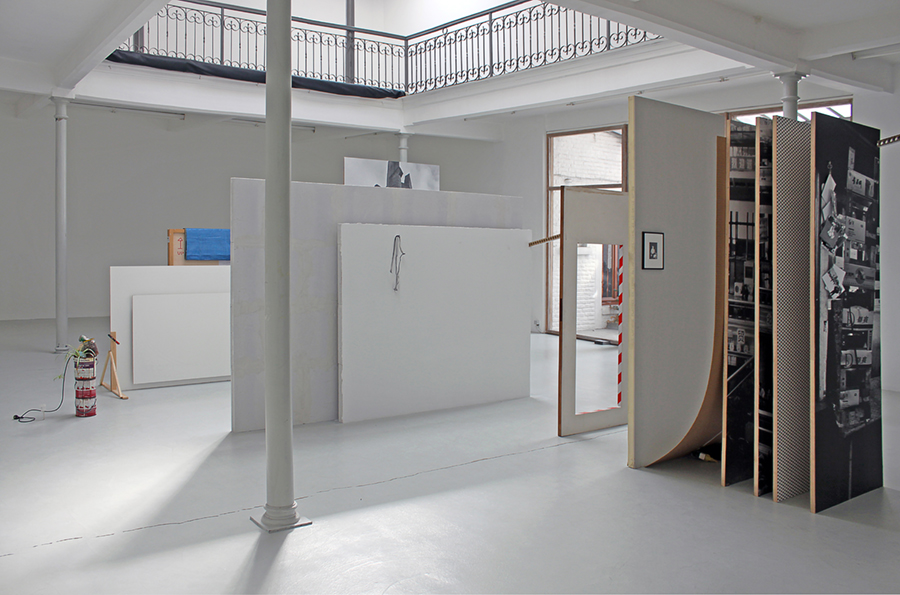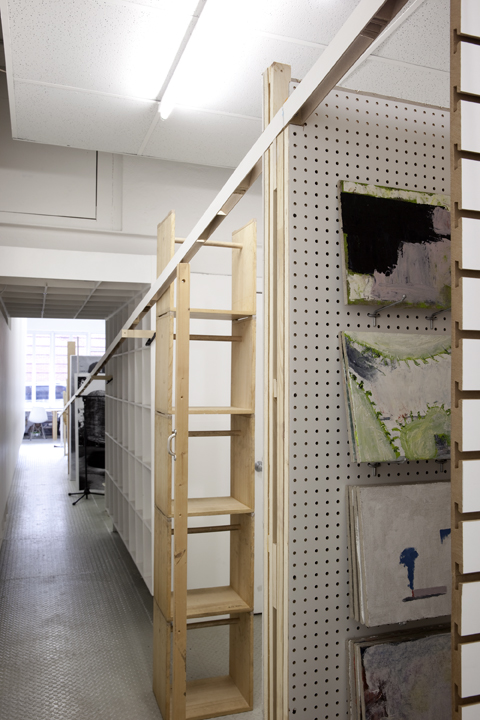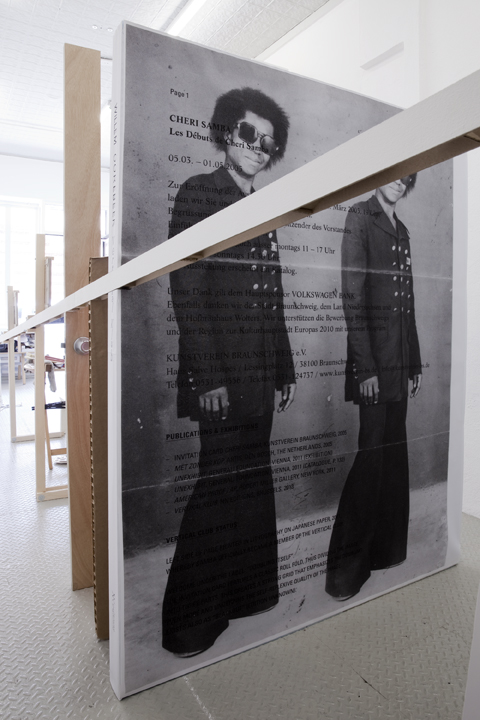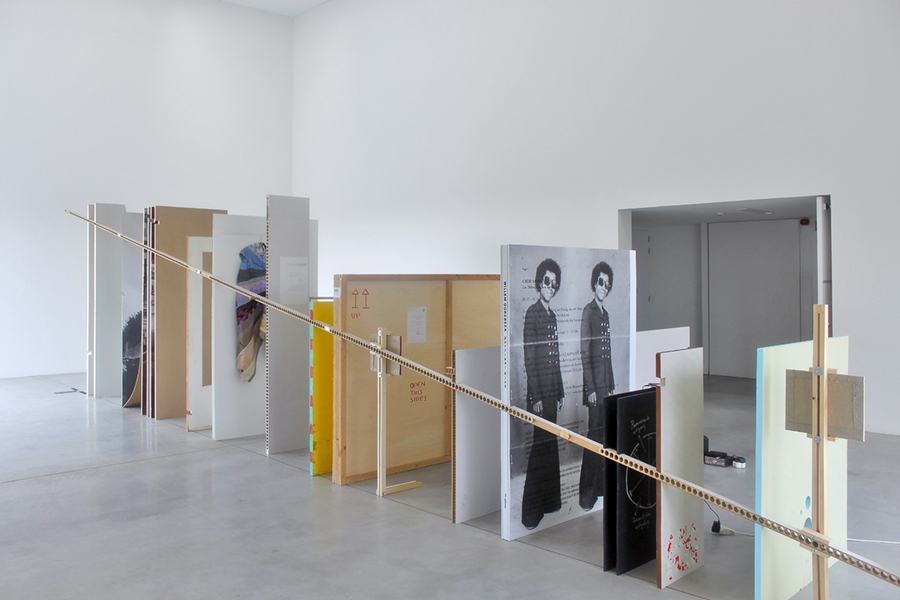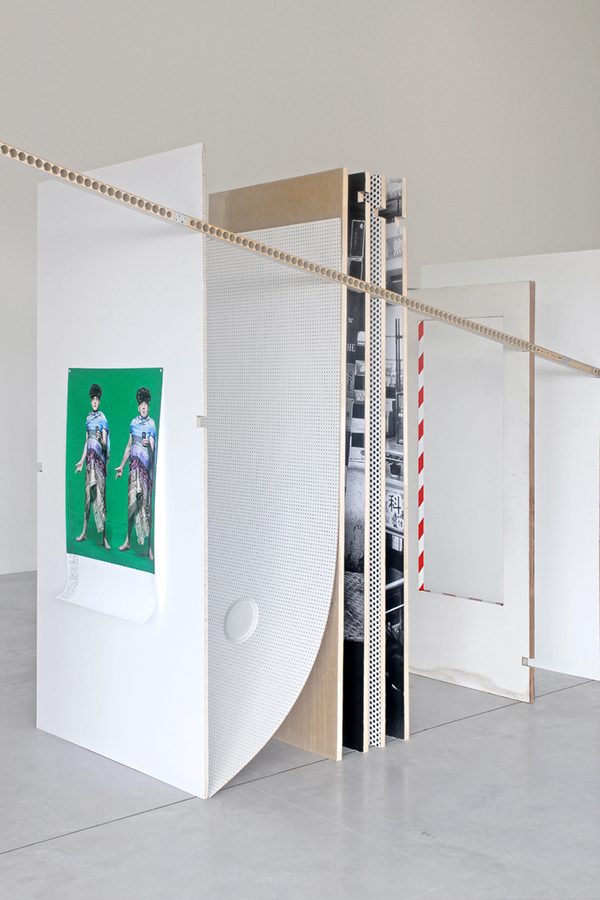Dans le cadre de l’exposition From A to K d’Aglaia Konrad au Museum M Leuven, un nouvel état de l’oeuvre processuelle et collaborative Tokonoma. Avec les collaborations de : Suchan Kinoshita, Aglaia Konrad, Willem Oorebeek, Eran Schaerf, Olivier Foulon, Walter Swennen, Kris Kimpe, Joerg Franzbecker. And guests
Tokonoma I
Galerie Nadja Vilenne, Liège, 05 > 09. 2012
Dans le cadre de Manifesta 2012
Tokonoma II
Ludlow 38, Goethe Institut New-York, 05 > 06. 2014
A tokonoma is a built-in recessed space in a traditional Japanese room in which items are displayed for artistic appreciation. Derived from the concept of the personal Buddhist altar, it has become a standard domestic feature with a decorative purpose. One only enters this space in order to change the display following a strict etiquette. Toko literally means « raised floor » or « bed », while ma describes the gap, space, or pause between two structural parts. A tokonoma is not created by compositional elements, but rather refers to one’s consciousness of place and awareness of form and non-form. It creates an experiential space emphasizing the interval, the in-between.
Suchan Kinoshita has been using her ongoing, continuously changing series Tokonoma to open similar in-between spaces of thought between the practices of different collaborators since 2012. Tokonoma functions as an open score to be performed by and negotiated with invited interpreters. The only preconditions of the Tokonoma are a set of fragile architectural elements, composed of a diagonal line that is supported by vertical planes. Together, these form an open structure of intervals to be punctuated by works chosen by the respective contributors. This installational setting facilitates a negotiation of the given conditions and positions, while challenging the status and manifestations of artistic media via various transitions: from sculpture to installation, to gesture, to presence and participation. Tokonoma thus opens a microcosm of inquiry into who, where, how, and what is being negotiated while on view—a microcosm for the investigation of how to confront the various realities and materialities of artwork, how to compose its different aspects, and finally of how to present individual works without granting one more importance than the other.
Tokonoma operates as an archive as well as an exhibition, bringing together varying working methods, processes, and works. Beside the notion of collaboration, it allows an approach towards performativity and the timeline of a show beyond singular events. Influenced by her study of musical composition, Suchan Kinoshita has been concerned with the possibilities of integrating time as a structural part of a total entity throughout her career. In relation to other artistic strategies and interpreters, she uses Tokonoma to destabilize claims for completeness via a structural embrace of transformation and change within the course of the presentation.
Tokonoma III
Museum M, Leuven, 05 > 09. 2016
Dans le cadre de l’exposition Aglaia Konrad, From A to K.
[sociallinkz]
